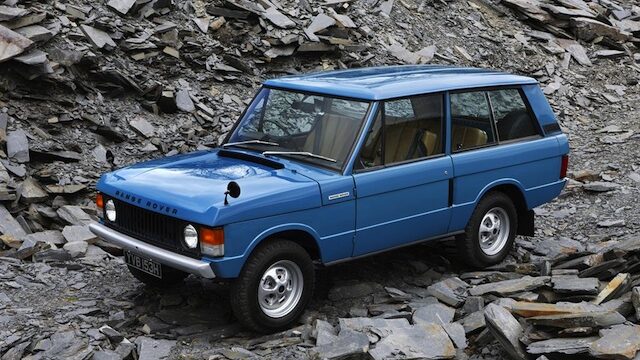Kim Henson takes a close look at another ‘modern classic’ launched since the Western Group of Motoring Writers was established.
With three fascinating decades of our Group now having flown by, in my series of 12 features labelled ‘Back to the Future Classics’, and appearing on our website through 2013, I am looking back at a selection of models seen as especially important.
Together, the vehicles I’ve chosen show how times have changed across the motor industry during the last 30 years, and, I feel, represent “12 of the most significant future classics launched in that time”. So put on your nostalgic spectacles again, and cast your mind back to the spring of 1984…
Now before I start, and before you all e-mail to point out the error of my ways, I know perfectly well that the original Range Rover was launched way back in June, 1970 – in fact within our own patch, in Cornwall.
However, as this is my series, I am boldly applying a little poetic licence in terms of its relevance to the 30 years of the Western Group (and if you are still reading this then I haven’t been censored so far).
In any case – and importantly – the 1980s saw a marked shift of approach with regard to the image, practicality and marketing of the Range Rover, together ensuring its remarkable and long-running success.
Just for a moment, let’s look back at the original Range Rover. Combining a spacious, angular three door body shell, Rover’s much-praised, Buick-derived 3.5 litre aluminium V8 engine, high ground clearance, long travel suspension and tough running gear components which ensured off-road ability on a par with that of the legendary but deliberately basic Land Rover, the newcomer was welcomed universally, and at a stroke created a new market niche. Yes, British Leyland had a truly effective vehicle that was perfect for its time – and which won many awards.
Of course, since 1948 the original Land Rover had built such a good reputation for ruggedness, reliability and effective operation in the harshest of conditions, that potential buyers of the larger new Range Rover were keen to find out more about it, and fascinated by the different types of use offered by it.
The distinctively styled original vehicle found favour with those in need of a large estate car with excellent off-road ability, in addition to which its sheer presence in any setting helped make it ‘desirable’. Interestingly, the interior was deliberately made easy to clean – or even to hose down – to the extent that it had a distinctly ‘utilitarian’ feel.

LITTLE MOVER…
The performance figures may seem tame by comparison with today’s sporting machinery, but in 1984, a zero to 60 mph acceleration time of 9.5 seconds, plus a top speed of 118 mph, were regarded as very good.
MOVING AHEAD
During the early 1980s, five door versions arrived – still unmistakably Range Rovers, but far more practical in daily use than the original three door model. Automatics joined the production line-up in 1982, further widening the appeal of the vehicle.

In addition, equipment levels, upholstery and interior refinements were regularly improved through the 1980s, so the emphasis was moved even further away from utility and towards luxury. Plush trim, mechanical refinement and excellent performance were all appreciated by buyers.
A diesel option was offered from 1986, and through the years a variety of tempting special edition Range Rovers were produced.
Further enhancements included the adoption (in 1989) of the 3.9 litre of the dependable V8, and the arrival (in 1992) of a long wheelbase version.
The off-road capability of these vehicles is legendary, and even when towing heavy trailers, slippery and/or rough conditions can be tackled with relative ease.
Performance on tarmac has always been strong too. As an example, a 3.9 litre automatic can scoot from rest to 60 mph in approximately 11 seconds, and has a top speed of around 110 mph.
Fuel consumption? Frankly, in V8 models at least, not for the faint-hearted when driven hard, at 10 miles per gallon or worse – but capable of being coaxed to 20 mpg or better, when cruising gently.
The original ‘Classic’ Range Rover was built for some time after the arrival, in late 1994, of its all-new replacement. Buyers just loved the early model’s looks, the way it drove, and its sheer ability. They still do.
The original Range Rovers, which were developed so effectively through the early years of the Western Group’s existence, paved the way, and provided the foundations for, the building of the well-respected models that have followed.
Despite the many upgrades and technical enhancements built-into the later examples, these still retain the essential character and image of their predecessors. It is quite surprising that it took rival manufacturers some time to produce models to offer effective alternatives for buyers.

Many enthusiasts still claim that the Range Rover was the ‘original and best’ of its type… Certainly, it was good, it will never be forgotten, and prices of early examples are rising.
© Kim Henson Images sourced thanks to Virtual Motorpix

